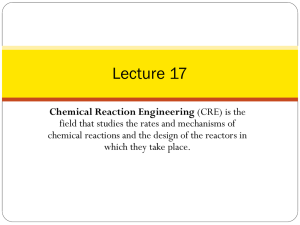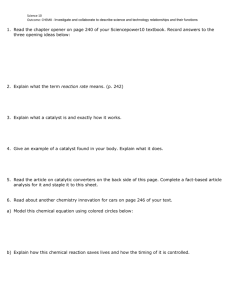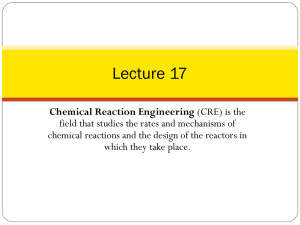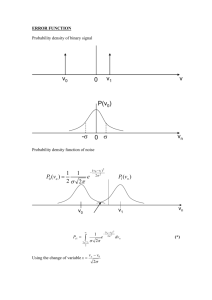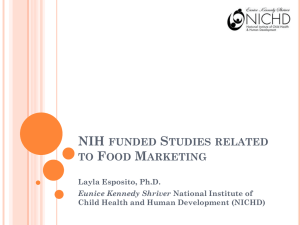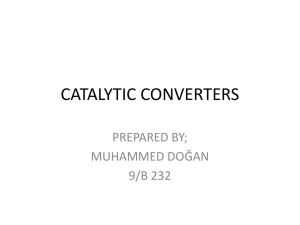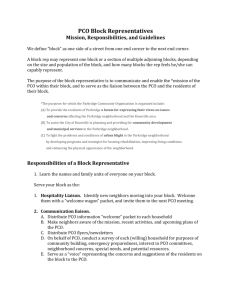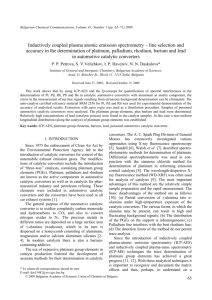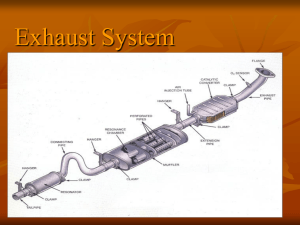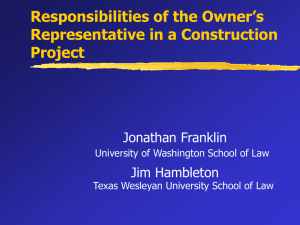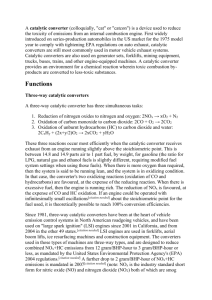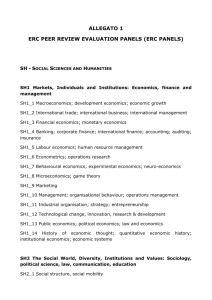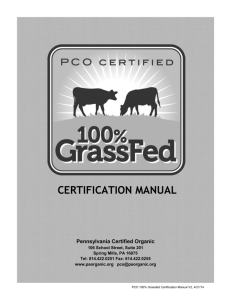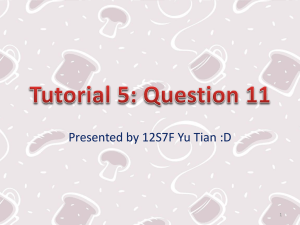lec24_without_pics
advertisement
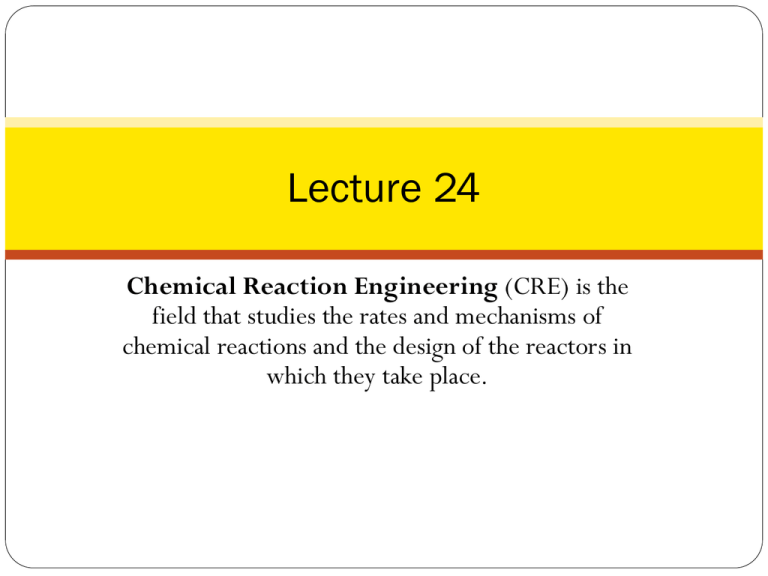
Lecture 24 Chemical Reaction Engineering (CRE) is the field that studies the rates and mechanisms of chemical reactions and the design of the reactors in which they take place. Today’s lecture Normal Pentene Iso-Pentane Langmuir Adsorption Isotherm Catalytic Converters for Automobiles 2 Last Lecture Catalytic Reforming Reaction (Gasoline) Normal Pentane Octane Number=62 Iso-Pentane Octane Number=90 Normal Pentane Iso-Pentane 3 4 Steps in a Catalytic Reaction 5 Steps in a Catalytic Reaction AB Adsorption on Surface Surface Reaction Single Site A S B S Dual Site A S S B S S Desorption from Surface 6 A S A S B S B S n-pentane n-pentane -H2 Pt n-pentene n-pentene N 7 0.75 wt% Pt Al2O3 Al2O3 i-pentane i-pentene Al2O3 +H2 i-pentene I Pt i-pentane k 2 k SC1 K N PN P1 / K P rN rS 2 1 K N PN K1P1 8 Isomerization of n-pentene (N) to i-pentene (I) over alumina N Al2O3 I 1. Select a mechanism (Mechanism Dual Site) Adsorption on Surface: Surface Reaction: Desorption: 9 N S N S N S S I S S I S I S Treat each reaction step as an elementary reaction when writing rate laws. 2. Assume a rate-limiting step. Choose the surface reaction first, since more than 75% of all heterogenous reactions that are not diffusion-limited are surface-reaction-limited. The rate law for the surface reaction step is C C 1 S rN rS k S C C NS KS 10 3. Find the expression for concentration of the adsorbed species CI.S. Use the other steps that are not limiting to solve for CI.S (e.g., CN.S and CI.S). For this reaction, rAD From 0: kA rD From 0: kD 11 CNS PN K NC C IS PI C K I PI C KD 4. Write a Site Balance. Ct C CNS CIS 5. Derive the rate law. Combine steps 2, 3 and 4 to arrive at the rate law: k 2 k s C I K N PN PI K P rN rS 2 1 K N PN K I PI 12 13 14 15 Automotive Catalytic Converters Placed inline with exhaust system (~$500) NOx plays big role in smog formation CO 2 CO NO ' rNO CO NO inert products(CO2 1 / 2N2 ) 16 Automotive Catalytic Converters 1) Propose a mechanism NO S NO S CO S CO S CO S NO S CO 2 N S S rADNO k NO PNO C V C NO S / k NO rADCO k CO PCO C V C COS / k NO rS k S C COS N NO S 17 Automotive Catalytic Converters (from graph data, we see CO2 is not on the surface and that the surface reaction is irreversible) N S N S N2 2S rD k C 2 NS PN2 CVk N2 rADNO / k NO 0 C NO S k NO PNO CV rADCO / k CO 0 CCOS k CO PCO CV rD / k N 2 0 C NS CV k N PN 2 18 Automotive Catalytic Converters ' rNO rS kSk NO k CO PCO PNO CV CT CV CNOS CCOS CNS CT CV 1 k NO PNO PCO k CO k N2 PN2 r ' NO 19 1 k k Sk NO k CO PCO PNO C 2 T P PCO k CO k N 2 PN 2 NO NO 2 Automotive Catalytic Converters Is this consistent with the given data? -No CO2 in rate law -rate law decreases as PN2 increases The contribution of PN2 is very small and can be neglected r ' NO 20 kPCO PNO 2 1 k NO PNO k CO PCO Automotive Catalytic Converters rNO optimum @ optimum : 21 drNO 0 dPCO PCO opt 1 k NO PNO kCO N S N S N S I S I S I S 22 End of Lecture 24 23
